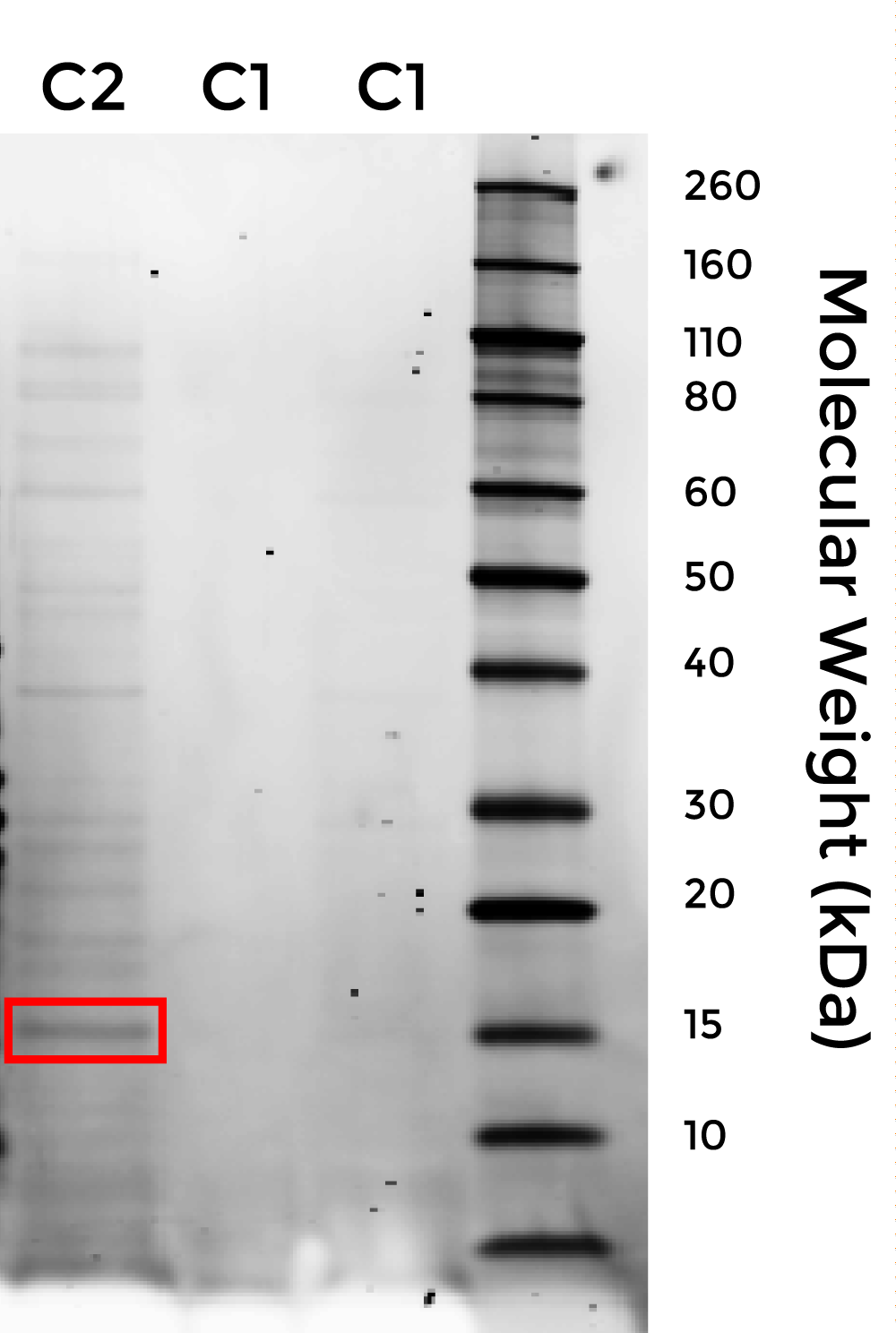Difference between revisions of "Part:BBa K1499401:Experience"
| Line 1: | Line 1: | ||
| − | |||
__NOTOC__ | __NOTOC__ | ||
This experience page is provided so that any user may enter their experience using this part.<BR>Please enter | This experience page is provided so that any user may enter their experience using this part.<BR>Please enter | ||
| Line 19: | Line 18: | ||
<!-- End of the user review template --> | <!-- End of the user review template --> | ||
<!-- DON'T DELETE --><partinfo>BBa_K1499401 EndReviews</partinfo> | <!-- DON'T DELETE --><partinfo>BBa_K1499401 EndReviews</partinfo> | ||
| + | |||
| + | The following gel image shows that PdomMRNAr1.2-08705.1 (nicknamed C2) was successfully purified with the chitin magnetic beads, suggesting that it exhibits chitin-binding activity. Pending cellulose-binding and waterproofing assays, C2 is a candidate for waterproofing both fungal mycelium and bacterial cellulose. | ||
| + | |||
| + | [[File:SBSiGEM2014_Wasp_Protein_Gel_Chitin.png|500px|thumb|center|<b>Figure 2.</b> C1 and C2 (PdomMRNAr1.2-08705.1) after chitin magnetic bead purification. C2 was successfully purified with chitin magnetic beads, suggesting that it this protein has functional chitin-binding domains as predicted by PSI-BLAST.]] | ||
Revision as of 21:57, 24 October 2014
This experience page is provided so that any user may enter their experience using this part.
Please enter
how you used this part and how it worked out.
Applications of BBa_K1499401
User Reviews
UNIQ88fbf24292e2d26d-partinfo-00000000-QINU UNIQ88fbf24292e2d26d-partinfo-00000001-QINU
The following gel image shows that PdomMRNAr1.2-08705.1 (nicknamed C2) was successfully purified with the chitin magnetic beads, suggesting that it exhibits chitin-binding activity. Pending cellulose-binding and waterproofing assays, C2 is a candidate for waterproofing both fungal mycelium and bacterial cellulose.

